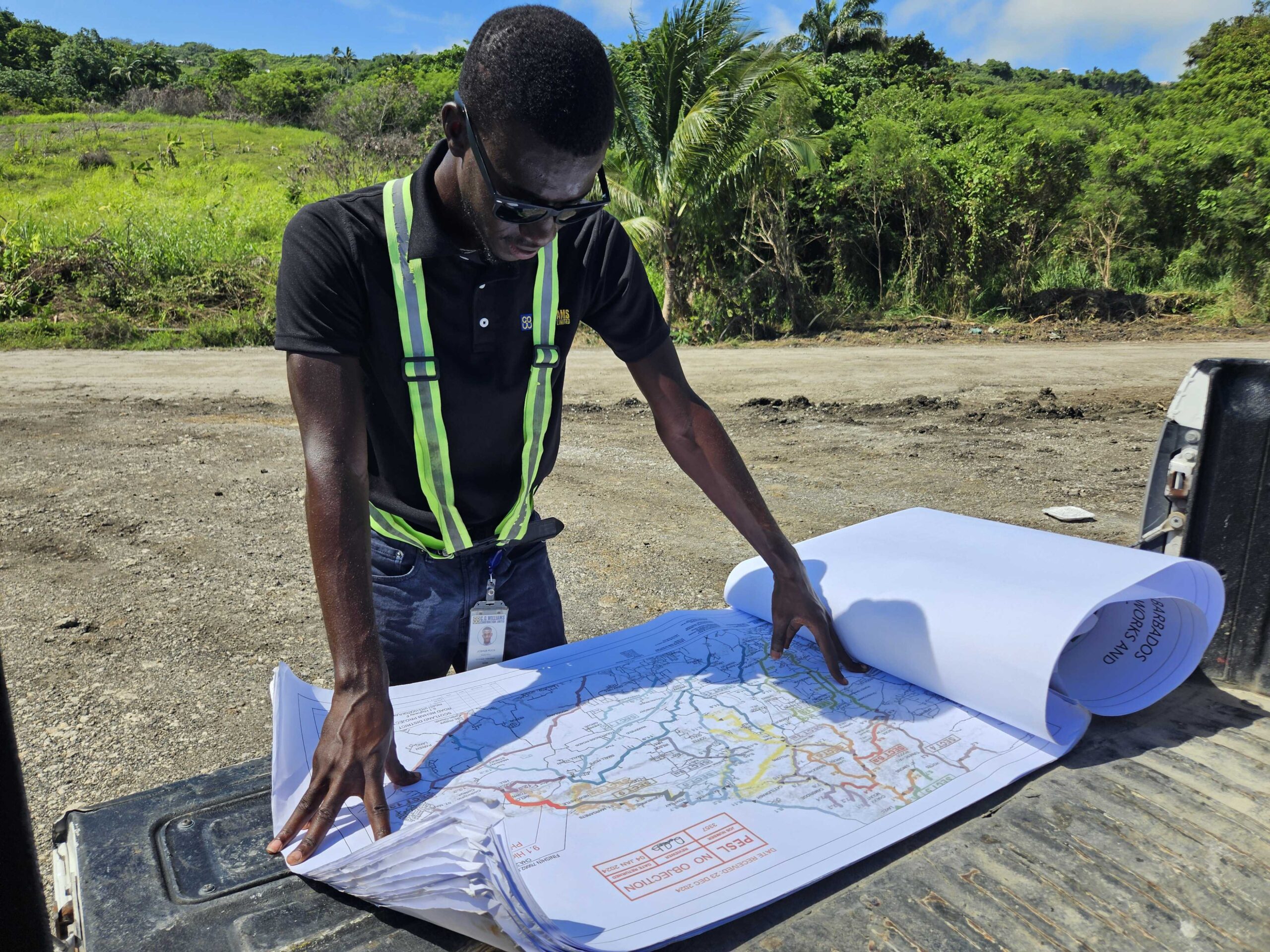The Scotland District Road Rehabilitation programme has been expanded to the “bumpy, wavy and holey” St John-St Joseph corridor, bringing long-awaited improvements to the eastern parishes.
The project, funded by a $230 million loan from the EXIM Bank of China in 2022, aims to address severe infrastructure issues.
The road repairs in the rugged and land slippage-prone Scotland District, began in St Andrew with a repaving of the Ermie Bourne Highway, the former East Coast Road from Belleplaine to Cattlewash.
The project’s extension promises to bring much-needed relief to villages that have long grappled with substandard road conditions, potentially boosting connectivity along the East Coast between the eastern parishes and districts further south to St Philip.
A six-kilometre stretch of road from Bath, St John to Andromeda Gardens in Bathsheba, St Joseph, is currently undergoing extensive repairs. Joshua Ruck, contract department supervisor for C.O. Williams Construction Limited, one of the subcontracted firms, described the road’s condition as “very bad” with “a lot of descents and depressions due to the poor sub-base material underneath”.
The project has been divided into three phases due to the breadth of repairs needed. The first phase, which aims to complete a new road and improved drainage system from Bath to the Martin’s Bay junction by year’s end, weather permitting, is already underway. The second phase will move on from that junction to Glenburnie; the third will continue to Foster Hall and lead to Andromeda Gardens.
“We are doing a full reconstruction of the road,” Ruck explained. “There are two aspects – phase one and phase two – which is a special pavement, is a series geotextile and HDPE [High-Density Poly Ethylene] liner, which is to reinforce the road and allow drainage to happen if water settles on the road.” HDPE is a thermoplastic polymer made from petroleum.
The roadworks, which began in late June, have faced challenges due to heavy rainfall.
“Most roadworks are affected by weather and the past couple of days it caused delays due to the fact that both of the trenches are filled with water, the soil from the crops washed into the trenches,” Ruck said.
Residents in the area have welcomed the improvements.
Area resident Gregory Cane expressed relief: “This is great, you know how long we have been waiting? Finally, we are getting it done and we are happy.”
He highlighted the toll the poor road conditions had taken on vehicles, necessitating frequent repairs.
“It has been a challenge over the years maintaining your car. The road was bumpy, wavy, and holey. You have to be changing shocks every minute and your suspension all the time.”
Robert Layne, another resident, noted that the road had not been repaired in 40 years: “The last time this road was done was in the 1980’s. It deteriorated because a lot of heavy-duty trucks used to travel these roads often coming from the Sand Hole to deliver material to different places. This is what you would call a back road so it is faster to leave St Andrew and connect to St Philip and other places using these roads. Then, a lot of places out here have springs and the water runs underground. So when the road is completed it needs to be maintained every ten to fifteen years.”
The Scotland District Road Rehabilitation programme initially focused on St Andrew, where many roads had been closed due to compromised bridges and severe land erosion.
sheriabrathwaite@barbadostoday.bb





